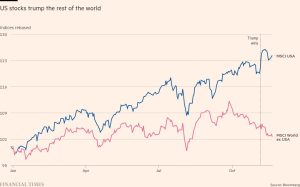Was it a mistake to buy a Rolls-Royce?
Unlock the Editor’s Digest for free
Roula Khalaf, Editor of the FT, selects her favourite stories in this weekly newsletter.
Are you sitting comfortably? The most recent service invoice for my Rolls- Royce was £3,689.31.
It’s an eye-watering sum — perhaps, for you, it answers a question I often pose myself: was buying it a monumental mistake?
Please don’t shout “yes” at the screen; this is a sensitive topic for me — I’m still clinging on to the idea that it’s an investment. If you have ever toyed with buying a classic car, you may well recognise my anguish.
Mine is a 1975 Corniche convertible in silver mink. I bought it several years ago for £60,000, with just over 75,000 miles on the clock. And it’s a corker.
Rolls-Royce made around 3,200 between 1971 and 1987. I own a 1a; it has the prettier chrome outers of the 1 with the engineering rack and pinion steering and technical innards of the 2. It’s also rare, just 48 right-hand drive versions of this model were built by Rolls-Royce’s specialist coachbuilding arm Mulliner Park Ward. The soft Wilton carpets are still luxuriously thick and the burr walnut dashboard as shiny and polished as it was when new.
Back then, it would have set you back just shy of £25,000, making it one of the most expensive cars on the market. According to one online calculator, that’s at least £190,000 in today’s money: the price of an all singing and dancing Aston Martin DB12.
In its day, Corniche owners ranged from pop stars to footballers. During the 1980s and 1990s this car lost its sheen. It aged and looked out of place, surpassed by supercars and sporty roadsters — it just became a bit sheepskin coat, gold medallion and perma-tan.
But like lots of things from that era, it feels cool again. And despite being 50 years old, it’s a very usable car: aircon, electric hood, seats, windows and steering, with the most distinguished two-tone horn I’ve ever heard. The driving experience is sublime, absorbing the many potholes in our roads without a wince. This is to be expected, since it was manufactured in the 1970s, the last time the country was in a total mess.
Inevitably, we’ve had our issues. On one road trip, the brakes locked, engulfing the car in clouds of smoke with a danger of imminent combustion. Luckily, we were 200 yards from a friendly local garage that temporarily sorted the problem allowing for an embarrassingly slow return trip home.
Another time, a minor incident occurred when a chrome wheel hub flew off into an innocent’s garden. It was soon retrieved after delving into their hedge.
And there was the occasion it inexplicably barfed a load of fluids all over the drive, rendering it inoperable. Cue the AA low loader to haul it back to my London-based specialist garage.
For the same money, I could have bought a 2010 Ghost. If you have a chauffeur and you don’t mind the £600-a-year road tax, be my guest. But it’s not a driver’s car. Insurance will set you back a big ol’ chunk, too. Budget between £3,000-£5,000 a year for servicing. And it won’t just drink petrol. It guzzles the stuff. You’d be lucky to see 20 mpg — and, sure, there are plenty of other options out there for that money: from Astons to Porsches, a Maserati or even a Bentley. But they’re all heavy on tax; and likely to reduce in value.
And while the servicing costs may be high on my car, other running costs are very middle aisle — in keeping with lots of cars of more than 40 years old.
Insurance is just a few hundred pounds a year. Fuel consumption is no better or worse than any other luxurious motor. And while successive governments continue to wage war on the motorist, some opulent options with financial benefits remain. It’s classed as a historic vehicle so there’s no road tax or Ulez to pay. And with the prospect of it increasing in value, as a wasting asset, it’s free of capital gains tax.
Ultimately, though, boiling down the costs of classic car ownership is fundamentally to miss the point.
Reducing any passion or pastime to a list of expenditures is always going to be a miserable, miserly process — and one that, inevitably, is going to result in telling you it was a mistake ever to begin.
But if it gives you joy, and you can afford it, so what? Life is for living. Regrets are for the therapist.
And, when I’m driving through the UK’s winding lanes and sunny uplands with the roof down, the car still feels like one of my best investments — when there’s no unnerving rattle coming from the engine, anyway.
James Max is a broadcaster on TV and radio and a property expert. The views expressed are personal. X, Instagram & Threads @thejamesmax
#mistake #buy #RollsRoyce



